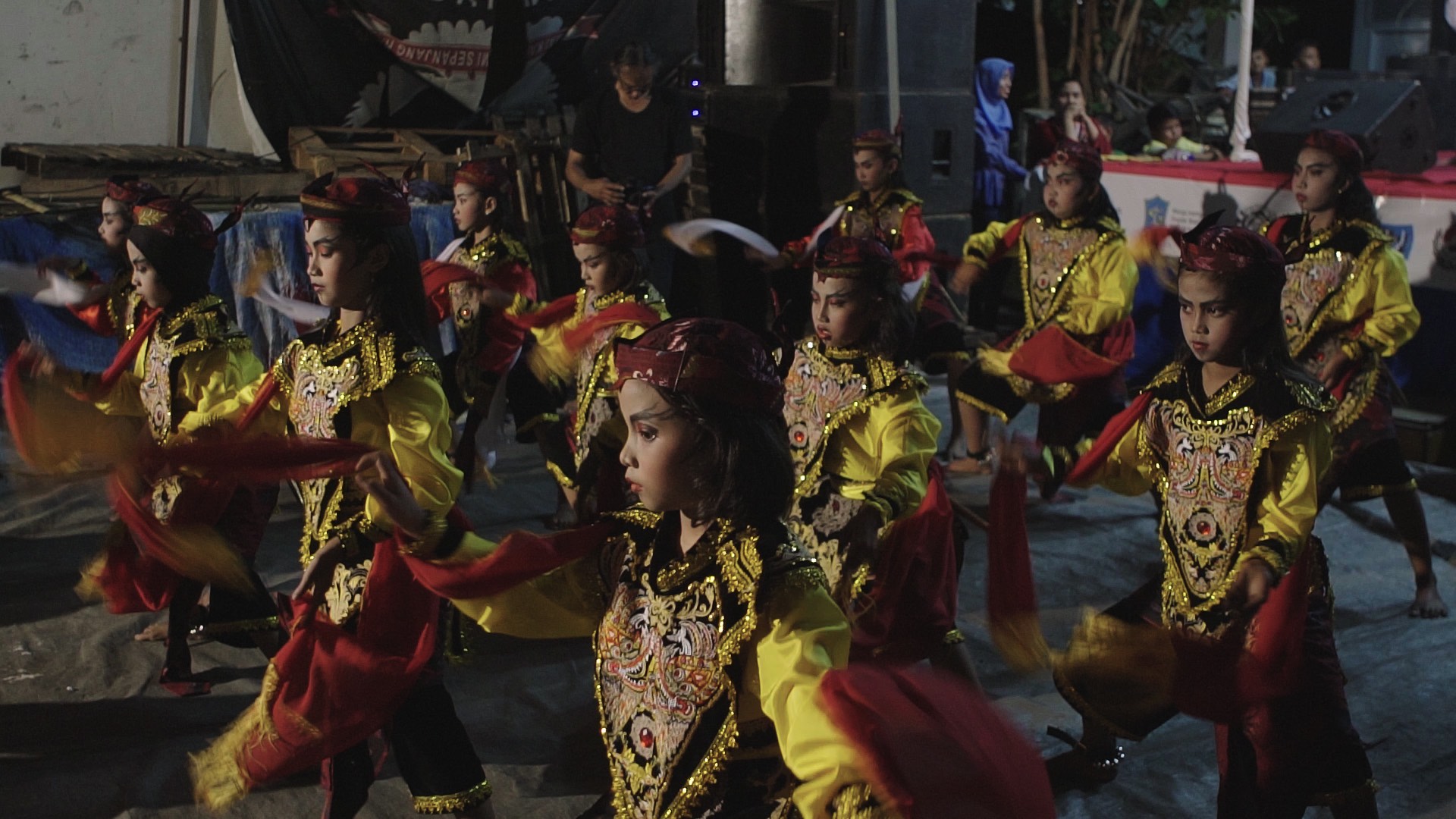Two years ago Kampung Bangunrejo was one of the busiest areas in Surabaya. At least it was when it was night. The neighborhood was home to Gang Dolly, an area that then carried the unenviable distinction as Southeast Asia’s largest red light district.
Cars would line the streets, and locals say that anyone, from a curious student to a top official, could have been in the driver’s seat. Dangdut koplo would blare from low-budget speakers and women, many of them sex workers, some of them just dangdut performers, would be dancing along in the streets.
Videos by VICE
But two years ago, Surabaya’s Mayor Tri Rismaharini shut Gang Dolly down. The sex workers and pimps vanished and Kampung Bangunrejo was suddenly quiet. But can you end prostitution by just shutting down a red light district?
Milisi Fotokopi doesn’t think so. This humanitarian organization believes that a city can’t just end prostitution with enforcement. Gang Dolly wasn’t just a red light district. It was also an entire ecosystem of businesses that ran in conjunction with the illegal side of the neighborhood. Without social support, the taxi drivers, food hawkers, and dangdut performers who used to rely on the crowds could easily bring prostitution back to Gang Dolly.
That’s why Milisi Fotokopi worked to bring arts and a traditional night market to the neighborhood. We met with the people behind the program last October to talk about how new economic opportunities are helping revitalize a neighborhood once known as the heart of Surabaya’s sleaze.
VICE Indonesia: So what’s the story behind the Bangunrejo Festival?
Milisi Fotokopi: It’s a collective event. Bangunrejo means “to raise one’s dignity,” so the festival is meant to create prosperity in the neighborhood.
OK, so it’s about solidarity and collective welfare for the community. Is that why it’s held here in the kampung?
Well this kampung had some negative stigma attached to it in the past because of Gang Dolly. But it was also lagging behind, in the socio-economic sense. So it’s a project for all of us. Gang Dolly had a serious negative impact socially on the kampung. So it’s important to create an arts movement that’s not affiliated with a certain religion so we can bond all people together. We can only do something like that through arts and culture.
So the idea is to gather all kinds of people from this kampung, and neighboring ones as well, so that people aren’t so segregated by their religion and ethnicity?
The sheer variety of cultural and educational backgrounds here are the key to holding this event. But it’s only a trial right now. I hope it’s not the last.
Will it be an annual thing?
Yeah. We’ve only just begun. I hope this will get bigger each year so that everyone can participate. This event isn’t funded by one particular individual, but by the whole community. It shows that people are willing to help each other to create a better place to live.
Artistically, what are you trying to do here?
We have a parade called Parade Dosomuko. Dosomuko is the villain in Javanese wayang. So he represents our evil side as humans—all the bad traits that hold back Indonesia, especially Surabaya, from fulfilling its destiny. We want to gradually hold this event with the hopes that one day, when we finish, we’ll be reborn. On 28 October, our country was first called the Republic of Indonesia. That’s why I think Kampung Bangunrejo has big dreams to better develop the nation.
There’s a program that teaches dance, painting, and performing arts, right?
Yeah, people need to learn how to empower themselves. The easiest way is to draw. Drawing can reveal one’s feelings and thoughts. The next is performing arts—which is another way to explore expression—and dancing. Dancing is a universal language. We don’t need words, it’s all about movement. So we must move! We have to move in every possible sense—in our thoughts, in our activities.

Do you think events like this will help pull people, and money, from outside the kampung as well?
That’s right. The goal is to build Kampung Bangunrejo economically. I hope this will get the government’s attention, or at least the public’s, so they come here. Because it’s not just about this event; it’s about empowerment. We’re going to collaborate with the general commissioner of Japan for some dance performances.
So then how often are you going to hold festivals like this in the future?
Well, we are trying to raise awareness. This is a test for the people to create trust among each other. Trust that they can exist, that they can perform together. I hope this will encourage them to do more. I really do hope we can do this every year, and that they will eventually do it themselves. This time it was put on by Milisi Fotokopi, Teater Kusuma, and friends from KPJ. But next time it will be done by the people here.
Ah, so it’s a bottom-up grassroots thing? Yeah, too often our society just sort of sits back and watches things go, with people sort of accepting their fate.
We could see that here, and that’s why we had to do this. We needed to expose “remo,” which is Surabaya’s identity. It means that every region has its own character. We need to be brave and make a move. We need to be proud like our ancestors. Proud like Cak Durasim, who stood up to the Japanese and the Dutch colonialists. So today we made this place an icon: “Bangunrejo, Kampungne Arek Suroboyo.” This is so Kampung Bangunrejo gets better, gets more honest. They are all good people here. We’re all human, regardless of our ethnicity or religion.




